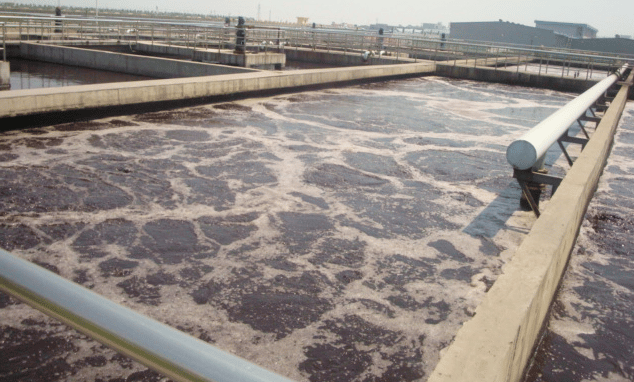Aeration can easily be over-aerated. This is called dissolved oxygen in aeration, or DO There is also the problem of insufficient DO. Therefore, DO must be kept within a reasonable range. Controlling the level of dissolved oxygen in the water can improve the efficiency of wastewater treatment and in addition can significantly reduce energy consumption.
When over-aerating activated sludge, it is not only very wasteful of energy, but also has a negative impact on process performance and can lead to serious operational problems. Dissolved oxygen in the aeration keeps the microorganisms in suspension during the treatment cycle. When microorganisms lose their food, they collide and stick together, forming what is called floc. When there is too much dissolved oxygen in the tank, it is characterized by floc break-up. This can cause a major problem when the mixture reaches the secondary treatment stage. The settling process can become a problem if the flocs are broken up into smaller and less dense areas and may even be resuspended. The anoxic zone used for denitrification can also become partially aerobic or aerobic due to the high dissolved oxygen in the internal (nitrate) recirculation stream. In a biological nutrient removal facility, the internal recirculation flow can be 450% or more of the influent flow. This recirculating flow draws liquid with high nitrate content from the end of the aerobic zone and discharges it back to the top of the anoxic zone, where there should be little or no dissolved oxygen.

Maintaining optimal dissolved oxygen levels in activated sludge plants is necessary for the biological treatment of organic material and ammonia. Although raw wastewater typically contains some amount of oxygen, aeration systems can increase dissolved oxygen (DO), mixing and microbial suspension through mechanical agitation or diffused aeration. Aerobic microorganisms use this oxygen to break down organic waste into inorganic by-products. The amount of dissolved oxygen consumed by microorganisms during biological treatment is called biochemical oxygen demand (BOD).
Wastewater operators should regularly monitor the availability of oxygen in the form of dissolved oxygen. Insufficient oxygen levels will kill aerobic and nitrifying microorganisms and cause flocs to decompose. The possibility of filamentous growth increases when the DO concentration is below 1 mg/L. On the other hand, too much oxygen increases power consumption and inhibits settling at very high levels. Studies have estimated that aeration can use 40% to 70% of the total power consumption of a treatment facility.
To provide adequate DO, blower run times need to be determined based on organic loading and system design. Colleagues should note that temperature, pressure and salinity all affect oxygen solubility. Other sampling locations may include raw wastewater, aerobic/aerobic digesters, and final effluent. Final effluent with high dissolved oxygen can lead to eutrophication of receiving waters, but low dissolved oxygen can harm aquatic life.
Dissolved oxygen is a frequently monitored parameter in wastewater treatment systems. Operators should gain insight into how dissolved oxygen is involved in wastewater treatment and how they can manage dissolved oxygen to achieve compliance. Contact KUOSI for a quote or solution for aeration equipment. We also offer Apure dissolved oxygen monitoring instruments (membrane method, optical method).
